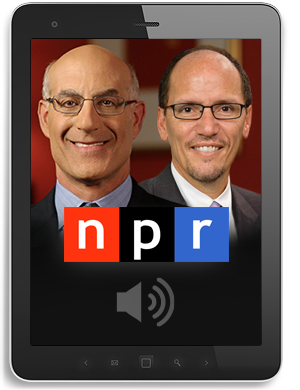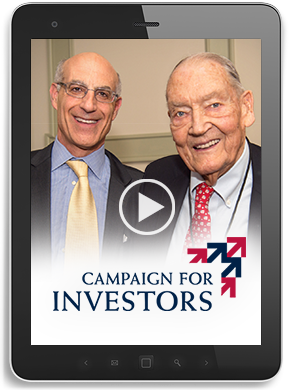ETFs Have Taken Off, But They Can Be Treacherous
Exchange traded funds, low-cost packages of securities that trade like stocks, have grown from virtually nothing to more than $1 trillion worldwide in 10 years.
Institutional investors, such as those that run your mutual fund or your pension fund, use ETFs to invest new money quickly or to hedge existing positions. Financial advisers use ETFs to create low-cost, custom portfolios for clients. Individual investors use them for long-term holdings — and short-term gambling.
Although ETFs are widely hailed as solid investment tools, the maturing industry is taking its share of knocks, too. Giving investors the ability to trade funds every minute in the trading day might tempt some people to do so — and that rarely works out well. And many new ETFs are so specialized as to be almost useless for investment purposes.
“We’re now into the bastardization of ETFs by Wall Street,” says Mitch Tuchman, CEO of MarketRiders.com, a website that recommends broad-based ETFs for average investors.
ETF assets have grown far faster than garden-variety mutual funds.
The largest ETF, SPDR Trust, has $66.7 billion in assets, making the climb to the nation’s largest stock mutual fund in 17 years, counting by single share classes. The popular ETF PowerShares QQQ has $18.6 billion in assets, even though the fund has lost an average 6.4% a year the past decade.
“It’s just a matter of time before ETF assets top $2 trillion,” says Loren Fox, senior analyst for Strategic Insight, which tracks the industry. Total stock fund assets are now about $5 trillion.
Individual investors account for about half the assets in ETFs, and it’s not hard to see why. They offer a low-cost way to invest in stocks, bonds, commodities and real estate, and they let you move in and out at any time during the trading day. And they allow you to buy slices of the market, rather than choosing a few individual stocks that could blow up.
“I can be long on technology without being wrong on Yahoo,” says Jack Reutemann Jr., founder and president of Research Financial Strategies in Rockville, Md. (“Long” means owning the stock, betting the price will go up.)
But ETFs, especially in the hands of individual investors, have the potential for big problems.
One is over-trading. For a long time, trading commissions were the biggest barrier to individual ownership of ETFs. If you wanted to build an ETF account over time, you’d have to pay a commission each time you made a purchase. But many discount brokers will let you trade ETFs for $9 or less — and Charles Schwab, the largest discount brokerage, will let you trade ETFs for no commission at all. (Most discount brokers will allow you to reinvest dividends for free.)
And that’s where some of the problems with ETFs come in.
Tempting but treacherous
Sometimes the temptation to trade overcomes investors’ common sense, says Jim Lowell, founding editor of the ETF Trader, a newsletter. Vanguard founder John Bogle has been an outspoken opponent of ETFs for that very reason: Investors tend to be their own worst enemies when it comes to trading ETFs. (Vanguard offers both traditional funds and ETFs, although its ETFs were introduced after Bogle had stepped down as CEO.)
Wall Street hasn’t helped, offering funds with outsize returns and outsize losses. For example:
Leveraged funds.
These funds promise to give you twice the return — on a daily basis — as the underlying index.
ProFunds Ultrabull ETF, for example, aims to give investors twice the daily gain or loss from the S&P 500. Direxion offers funds that will give you three times the daily return of their underlying indexes. It sounds great, but when the market moves against you, losses can add up quickly. Last year, the worst-performing fund was Direxion Daily Financial Bear 3X Shares, which plunged 95%.
What’s worse is that many leveraged funds aim only to produce their returns on a daily basis, rather than over the long term. It’s entirely possible, for example, for a leveraged long fund to produce a loss in a bull market. Losses in some leveraged ETFs have been so alarming that the Securities and Exchange Commission and FINRA, the financial services self-regulatory agency, have put out an investor alert about them.
The funds can be very lucrative for the companies that offer them, however. Direxion, for example, attracted $8 billion in assets in seven months when it rolled out its triple-leveraged funds, Lowell says.
Specialty funds.
Investors can choose from more than 900 ETFs, and some new offerings are highly specialized, to say the least.
“They’re slicing the baloney thinner and thinner,” says Burt Greenwald, a Philadelphia-based mutual fund consultant. You can now buy ETFs that specialize in timber, Canadian energy stocks, water, the Swedish krona and Chinese real estate.
Investors are often lured in by outsize gains of highly specialized funds. The Market Vectors Coal ETF, for example, soared 144% last year, according to Morningstar, the mutual fund trackers. Highly specialized funds are not only volatile, but also thinly traded — which means that the funds’ share prices might not track the underlying index terribly well. Case in point: The United States Natural Gas fund fell more than 50% last year, even though natural gas prices rose slightly in 2009.
Actively managed funds.
The newest innovation: ETFs that have a portfolio manager. Unlike index funds, which are relatively easy to assess, investors in actively managed ETFs have to take a guess about the ability of the manager to perform well.
ETF Trader editor Lowell thinks that the growth in new funds is simply part of the evolution of a new industry.
“I love to see new ideas, and I love to see stupid ideas,” Lowell says. “Right now, we’re at the point where some form of natural selection is taking place.”
Last year, several ETFs were liquidated by their sponsors because they didn’t attract enough assets.
Not all of the growth in ETF assets is from individual investors. Professional money managers, too, are voracious ETF consumers: “Everyone from hedge funds to endowments, pensions and other mutual funds,” Fox says. The pros own half of the industry’s assets, says Strategic Insight.
One reason: convenience. Big institutional investors used to use money market securities, or cash, as a place to park new money until they could invest it in stocks. In a rising stock market, however, holding a big bundle of cash can hurt performance. A savvy fund manager can park excess cash in an ETF that roughly mirrors the fund’s benchmark.
Financial advisers — investment professionals who charge a fee to manage individual accounts — have grown extremely fond of ETFs, too.
Reutemann uses ETFs for his trend-following system of investment management.
“I don’t like individual stocks, and I don’t like mutual funds,” Reutemann says.
Costs are relatively low
One reason Reutemann, like many other managers, likes ETFs: low cost. Many advisers charge a percentage of the client’s assets to manage money, often as much as 1%. The average stock fund charges about 1.5% in fees. It’s tough to produce decent returns for clients when you’re taking 2.5% or more in expenses every year.
Many ETFs, however, charge 0.4% or less each year. Schwab U.S. Large-Cap ETF, the cheapest ETF, charges 0.08% a year — $8 on a $10,000 investment.
An adviser can keep a client’s portfolio in ETFs and still have lower expenses than many actively managed mutual funds. Advisers also like ETFs for hedging against market declines — and for giving investors exposure to areas that had long been either too risky or too expensive for ordinary investors.
You can buy ETFs that invest in physical commodities, such as gold, silver, platinum and palladium. SPDR GoldShares, which invests in gold bullion, has attracted $40.2 billion since its inception in November 2004.
Other ETFs invest in broad ranges of commodity futures. And you can now choose among more than 100 bond ETFs, including one that invests entirely in Treasury bills — effectively, an exchange traded money fund.
The powerful interest in ETFs from institutional investors and from individuals almost guarantees that the industry will continue to grow rapidly in the next 10 years, although perhaps not as rapidly as in the past 10 years. The biggest danger, however, is that in the rush to gather new assets, investors’ best interests will get overlooked.
For example, says MarketRiders’ Tuchman, many new index funds use indexes that have been created just for the fund. Without back data on how the index has performed over time, it’s hard to evaluate the fund.
And that trend makes him worry.
“If Wall Street can find a way to make money off the unsuspecting investor, it will,” Tuchman says.
* Rebalance shares the same investment platform as MarketRiders.






